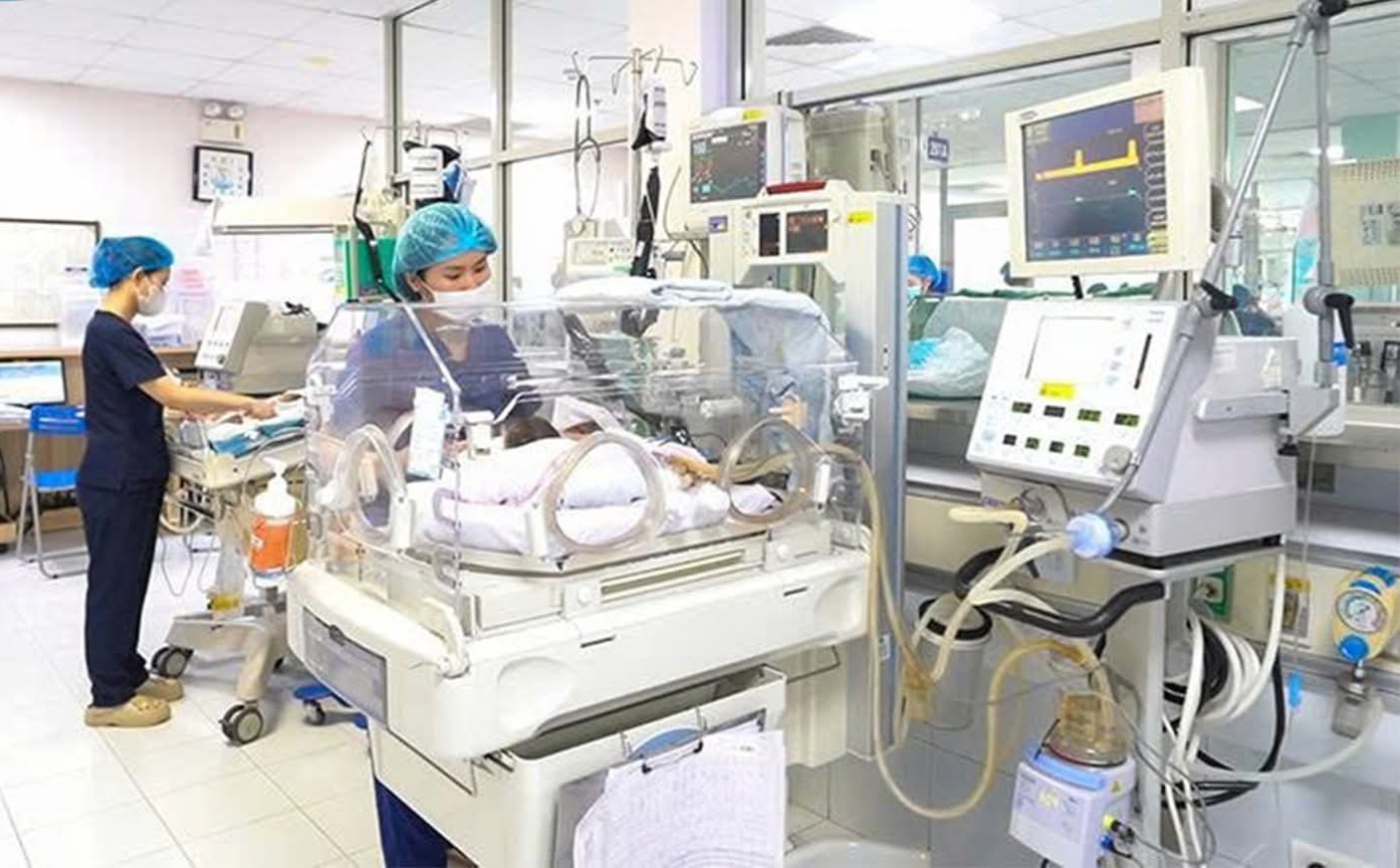On 13/8, the National Children's Hospital in Hanoi confirmed the death, adding that despite intensive resuscitation efforts using the most advanced techniques, the infant died due to severe pulmonary hypertension and circulatory failure. The baby was transferred to the hospital in critical condition, suffering from cyanosis and respiratory failure, requiring immediate oxygen support following the elective c-section.
 |
A baby with respiratory problems receives treatment at the National Children's Hospital. Photo: *Hospital* |
According to a report by the Ministry of Health, the national c-section rate is nearly 37%, and even reaches 50-60% in some hospitals, far exceeding the 10-15% recommended by the World Health Organization (WHO). This high rate is attributed to many families actively choosing the method and timing of delivery, in addition to medically necessary c-sections for high-risk pregnancies.
Experts warn that non-medically indicated c-sections carry substantial risks compared to vaginal births, raising concerns about the long-term health of both mother and baby. Vaginal delivery remains the safest and most natural method. The natural labor process helps clear fluid from the baby's lungs, reducing the risk of respiratory problems after birth. It also exposes the newborn to beneficial microorganisms from the mother, establishing a strong foundation for the immune and digestive systems. For the mother, vaginal birth promotes faster recovery, reduces the risk of postpartum complications, and enhances mother-infant bonding through skin-to-skin contact and early breastfeeding.
C-sections should only be performed when medically necessary. Instead of worrying about auspicious birth times or unnecessary interventions, expectant mothers should prioritize regular prenatal checkups and choose reputable healthcare facilities for delivery.
Le Nga












